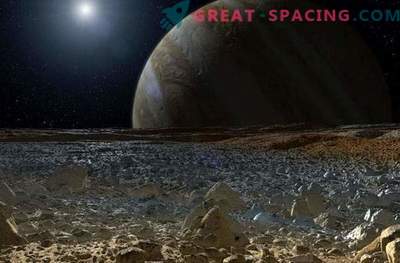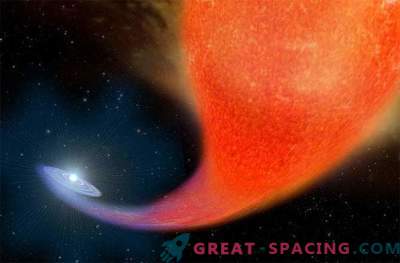
Enceladus, ice satellite of Saturn, shows certain signs of hydrothermal activity - we can see a similar picture in deep sea hydrothermal springs on Earth, where water is heated and minerals are formed. The news that the ocean with salt water is under the surface increases the biological chances of the satellite.
"This discovery, combined with the underground ocean and geological activity, creates conditions suitable for living organisms," said John Grunsfeld, associate professor at NASA's Flight Science Department in Washington, DC. "The discovery in our solar system of extreme conditions in which life can exist will bring us closer to the answer to the question: are we alone in the universe?"
Enceladus is already known for its famous water geysers, escaping from under the icy crust of the satellite. The long cracks in the area of the south pole of Enceladus, which allow liquid water to escape into space, are a sure sign that some kind of heating process is taking place deep inside the ice world.
Now, based on the analysis of the minerals contained in the water vapor detected during the passage of the NASA Cassini mission, the nature of this water heating will be revealed. And this is great news if you are looking for a deep-sea dwelling for germs.
On Earth, hydrothermal sources at the bottom of the oceans are the greenhouses of chemical reactions that provide vital energy carriers. Often, life forms found on the ocean floor do not require sunlight to survive. Now, thanks to a new analysis of Cassini data, scientists have discovered microscopic silica grains (mineral quartz, which can be found on Earth). This means that hot water, which has a temperature of at least 194 degrees Fahrenheit (90 degrees Celsius) and contains dissolved minerals from the satellite's heart, was forced to pass through cold layers of water. This is how the tiny grains of this mineral are formed.
"It's great that we can use these grains ejected into space by geysers to study the conditions occurring on the ocean floor of an icy satellite," said Sean Hsu, lead scientist at the University of Colorado at Boulder.
The small grain size of the minerals found in Enceladus water vapors can tell us about the speed with which they were formed. The largest grains had only 6 to 9 nanometers, indicating that they formed very quickly. The distance from the seabed to the surface is about 30 km, so the grains had to spend from several months to several years to get to the surface, otherwise they would have grown much more.

The famous feathers of Enceladus, which are known to consist of saline water vapor with the addition of organic compounds.
The presence of hydrothermal activity on Enceladus suggests that the satellite has a porous stone core, through which liquid water can freely filter, taking mineral particles. In addition, scientists are interested in a curious abundance of methane in the geysers of Enceladus. Under the pressure of Enceladus' deep ocean, methane is most likely blocked inside ice crystals of water, the so-called clathrates. According to scientists, the formation of clathrates on Enceladus must be so effective that the ocean must be completely depleted of methane. If so, why did Cassini observe such an abundance of methane in geysers?
There are two theories. According to the first theory, ocean clathrates move to the surface under the action of geysers, while releasing methane. According to the second, hydrothermal activity forms more methane than the clathrate formation process blocks.
“We didn’t expect our study of clathrates in Enceladus’s ocean to lead us to believe that methane is being actively produced by hydrothermal processes,” said Alexis Bouquet, a graduate student at the University of Texas at San Antonio.
On Earth, hydrothermal sources heat up as a result of volcanic activity deep in the core of our planet, thus providing all the necessary ingredients for life so that it can form at the bottom of an ocean devoid of light. On Enceladus, the core of which is heated by Saturn's tidal compression, it seems that identical processes occur.
But does microbial life exist in the depths of Enceladus? Currently, we can only guess.











































